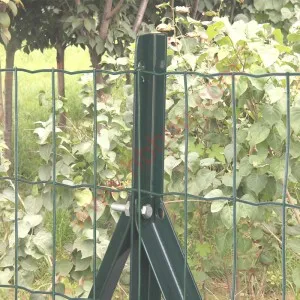Understanding Electric Fence Drivers Safety and Technology
Electric fences have become an essential tool for many purposes, including agricultural practices, wildlife management, and property security. At the heart of this technology is the electric fence driver, a vital component responsible for delivering the electrical pulse that deters animals and enhances perimeter security. In this article, we will explore what an electric fence driver is, how it works, and its applications.
What is an Electric Fence Driver?
An electric fence driver, also known as an energizer or charger, is a device that converts electrical energy into high-voltage pulses, sending them along the fence wires. This rapid pulsing creates an electric field that acts as a psychological barrier for animals and intruders. The driver is designed to operate efficiently while being safe for the animals and humans that come into contact with the fence.
How Does an Electric Fence Driver Work?
The basic principle behind an electric fence driver is relatively straightforward. When connected to a power source—this could be a standard electrical outlet, a battery, or even solar panels—the driver transforms the input energy into high-voltage pulses, typically ranging from 2,000 to 10,000 volts.
These pulses travel along the wires of the fence at intervals, delivering a short, sharp shock to anything that touches the wire. Importantly, the electrical shock is designed to be startling but not lethal, serving as a deterrent rather than causing harm. The shock instructs the animal (or human) to avoid the fence in the future, establishing a psychological barrier.
Applications of Electric Fence Drivers
electric fence driver

Electric fence drivers have a wide array of applications across various fields
. Here are a few key areas where they are commonly used1. Agriculture Farmers use electric fences to protect crops from wildlife and keep livestock contained. Electric fencing is flexible, allowing for the creation of temporary or permanent enclosures that can be modified as needed.
2. Wildlife Management Electric fences can help manage populations of certain wild animals, preventing them from encroaching upon human habitats or agricultural areas. This helps maintain a balance between wildlife and human activities.
3. Security Homeowners and businesses often utilize electric fences as part of their security systems. The presence of an electric fence can deter intruders and alert property owners to unauthorized access.
4. Research In wildlife research, electric fences can be used to study animal behavior without causing harm. By controlling the access to certain areas, researchers can gather data on animal movements and interactions.
Considerations for Use
While electric fence drivers are effective, they must be used responsibly. Proper installation is crucial to ensure effectiveness and safety. Regular maintenance is also essential to keep the system functioning properly. Furthermore, it is important to comply with local regulations regarding the use of electric fences, as these can vary widely by region.
In conclusion, electric fence drivers are a fundamental part of modern fencing solutions, providing a safe and efficient way to manage boundaries across various applications. By understanding how these devices work and their appropriate applications, one can effectively harness their benefits while ensuring safety and compliance.
















